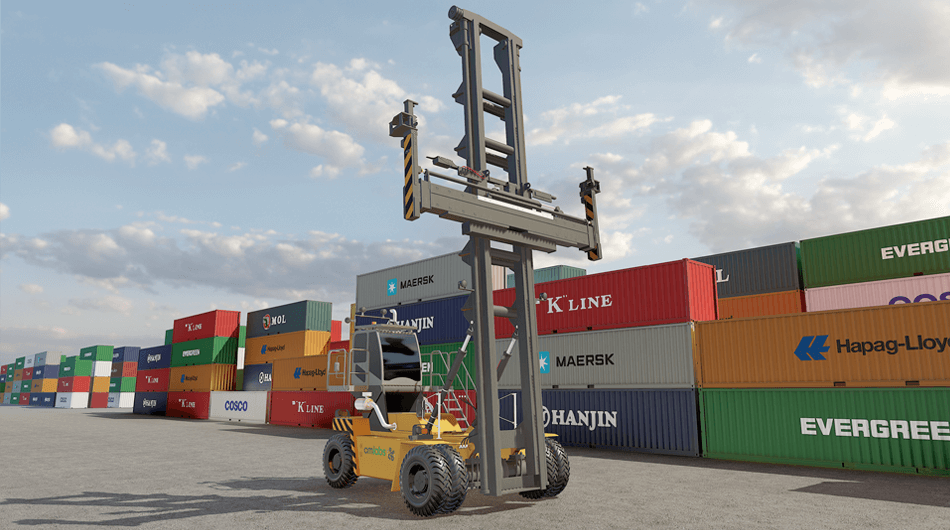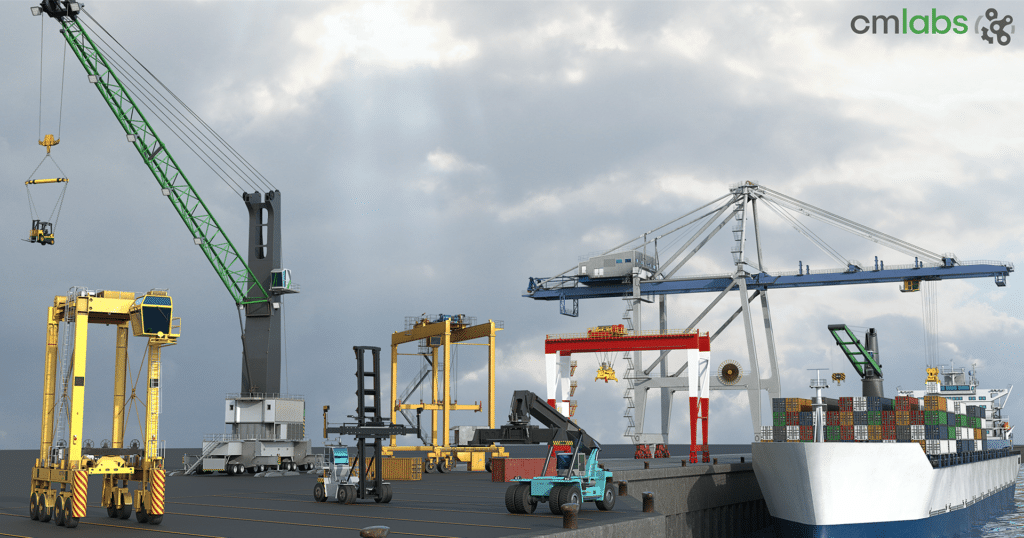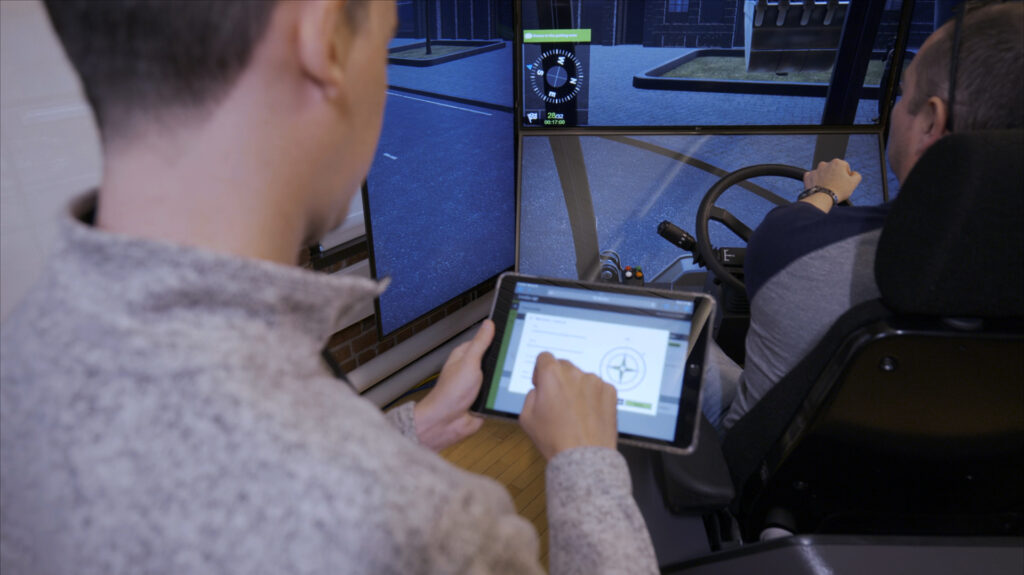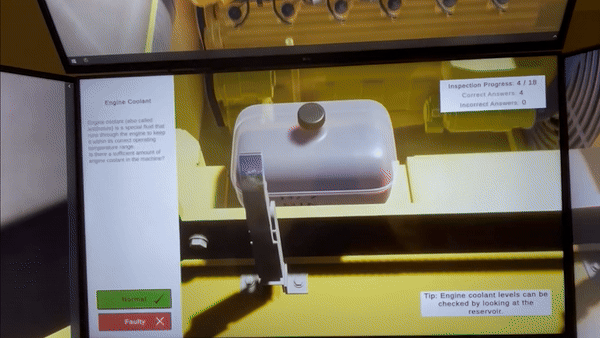Crane Service Industries Provides Top notch Training with Vortex Simulator
Success Story Summary
The Organization
The Situation
The Solution
The Results
“I don’t know if I can do this,” the young crane operator said. He was not referring to a lift. A car accident had burned the fingers off his right hand. He was referring to his future as an operator. Dub Huggins felt differently. He suspected the boy had lost more will than dexterity. And he knew how to get it back.
Huggins’ dedication to operator training is intense. His approach speaks volumes about the hazards of the trade: “I need to make sure that these operators understand their responsibilities, and get them to where they’re secure enough in their knowledge to stand up to a foreman and go no, I’m not going to do it, this lift is not safe.”
“I want every employer out there to know that if an operator comes from Crane Service Industries,” he continues, “they can rely on his skills and knowledge.” Dub Huggins manages the training for CSI, and he knows his rigs as intimately as the Cal/OSHA regulations he’s been teaching for over ten years. So when he says his crane simulator is realistic, he doesn’t mean “close enough.” He means it acts and reacts just like the real thing.
“The Vortex Simulator is one of the greatest tools we have,” he says. “What used to take 8 to 10 hours of very intense one-on-one training to provide the skills foundation is now down to 4 hours — 6 hours at the most.”
“The Vortex Simulator is definitely a step above — it’s really best-of-class in the simulator world,” Huggins says.
Huggins saw his first Vortex® Simulator at CONEXPO 2014, at the CM Labs Simulations booth. “I stood there for 4 hours,” he says. And what I heard time and again was ‘that is the most realistic that I have ever seen’. And you’re talking to experienced operators.”
Soon afterward, a Vortex Simulator was trucking down to Bakersfield from CM Labs’ shop floor. “The main benefit of Vortex,” says Huggins, “is that it cuts down on actual crane time — you can get the guys to ease in and ease out of a swing on the simulator, and ease in and ease out of the boom and then catch the load, and you’re not putting that wear and tear on the real crane.
“It allows the student to get comfortable with the controls, and it takes that fear away — he’s not going to turn over a crane, he’s not going to break a rotation bearing, he’s not going to be slapping cable on the boom.”
The realism of Vortex Simulators is powered by CM Labs’ Vortex simulation software. This software simulates the real behaviour of cranes, rigging, cables, and loads, validated against empirical and engineering data. Vortex Simulators also track and log performance metrics, such as the amount of time elapsed in a training exercise, the amount of fuel used, pendulums, collisions, failure to protect others on the worksite, and more.
“Vortex reduces the time that we have to spend out on the cranes, and it has reduced our maintenance and fuel costs phenomenally,” says Huggins. “The wear and tear reduction on the cranes out there has been dramatic.” CSI encourages certified operators to return to the simulator if they feel like they need to shake off the rust before a big job, and Huggins says this has boosted buy-in from current students.
“ Vortex reduces the time that we have to spend out on the cranes, and it has reduced our maintenance and fuel costs phenomenally. The wear and tear reduction on the cranes out there has been dramatic.”
Dub Huggins, Training Manager, Crane Service Industries
“Students will come in and see someone on the sim who’s actually certified, just coming in to hone his skills, they say ‘oh well, if he’s doing that on this, I guess it’s not a video game after all’.
“It just gives us an advantage that we don’t have on the cranes. Out on the crane, we can’t make the wind gust, we can’t make it rain — but on the Vortex Simulator, we can. And the student really has to adjust for the limitations of the actual equipment. We have created a gentle, competent user by the time they go out on the crane.”
Dub Huggins especially appreciates the efforts of the CM Labs team to ensure the simulator’s peak condition. “Customer support has been outstanding. There has not been a time that I have called CM Labs and not been helped. Sometimes it’s been as easy as ‘tie it into the internet and let us take over the controls’, and 10 minutes later I get a call and we’re done.
“Seriously, I still have not seen a system that even comes close to equalling Vortex. Does it save us money? Yes. And does it improve the quality of our end product? Yes it does.”
As for the burn victim looking to abandon his operator career, Huggins was not willing to give up on him just yet. “Let me prove to you,” Huggins told him, “that you can operate a crane.”
“I put him on the Vortex Simulator,” he relates, “and let him build up his confidence there. And then when I put him on a crane, he got it: Oh. I can.” Huggins beams “He’s gone on to be a successful operator.”
What makes Huggins so determined to get the best out of his students?
“The crane operator has all the weight on his shoulders,” he says. “If a lift goes bad, it’s not because of the signalman, and it’s not because of the rigger. It’s always going to be the crane operator. But once craning gets into your blood,” he adds, “it’s kind of hard to get it out.”




